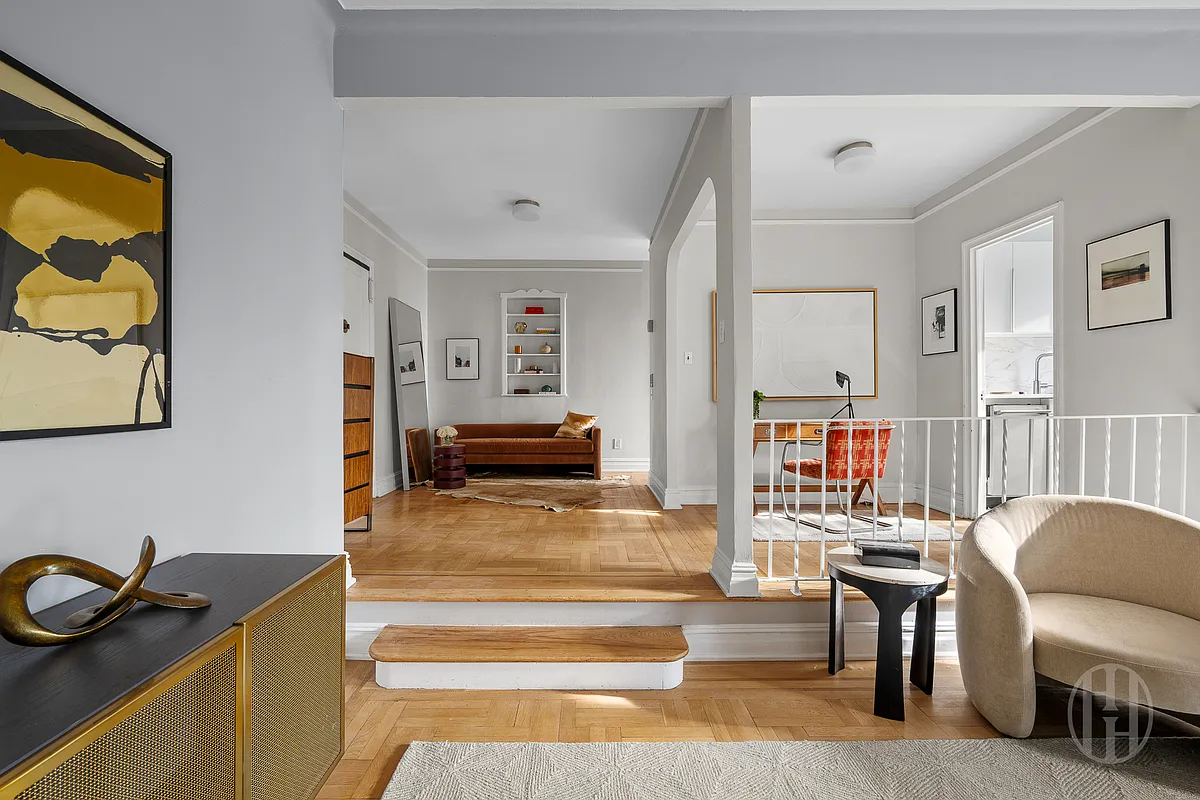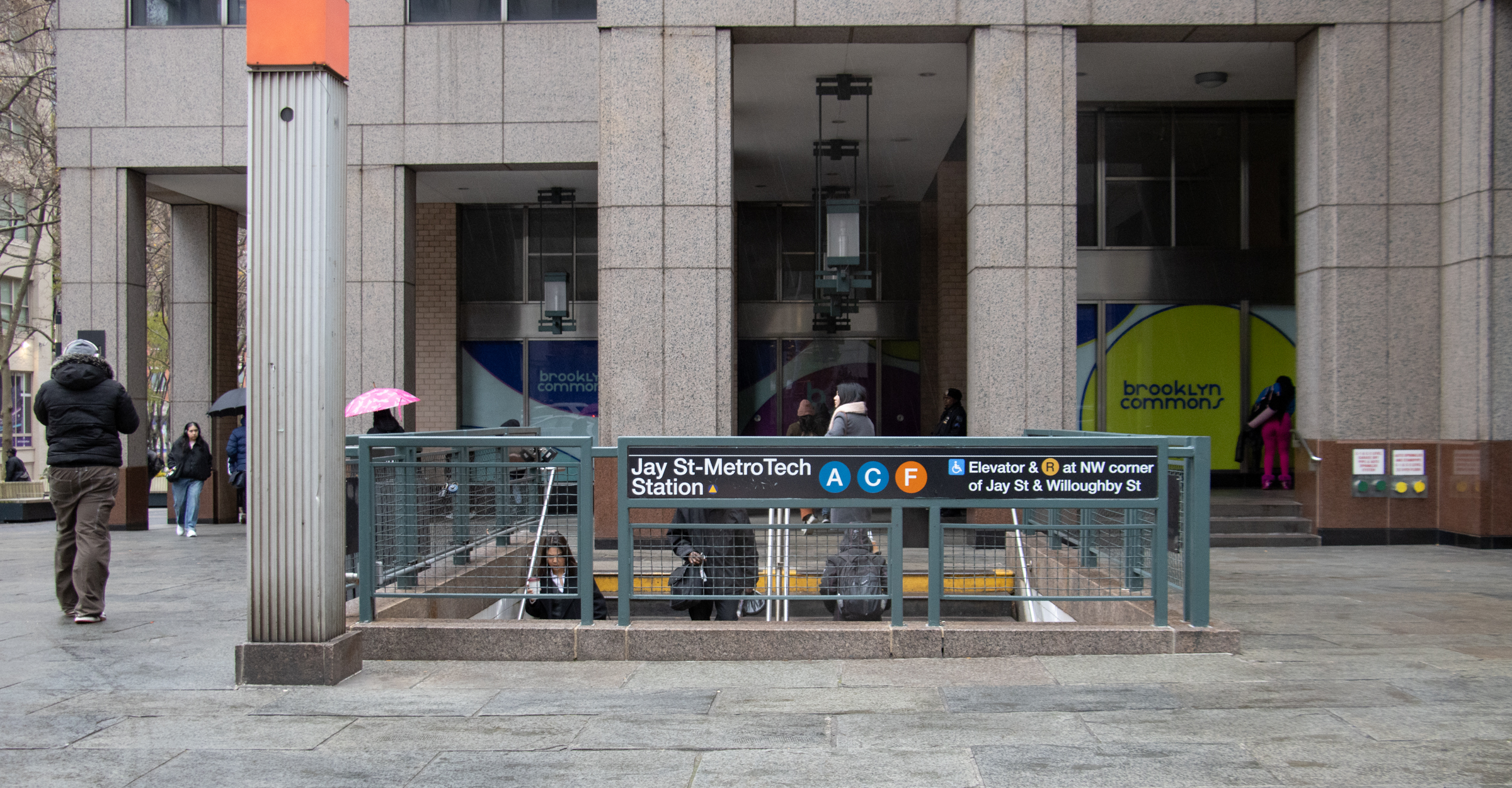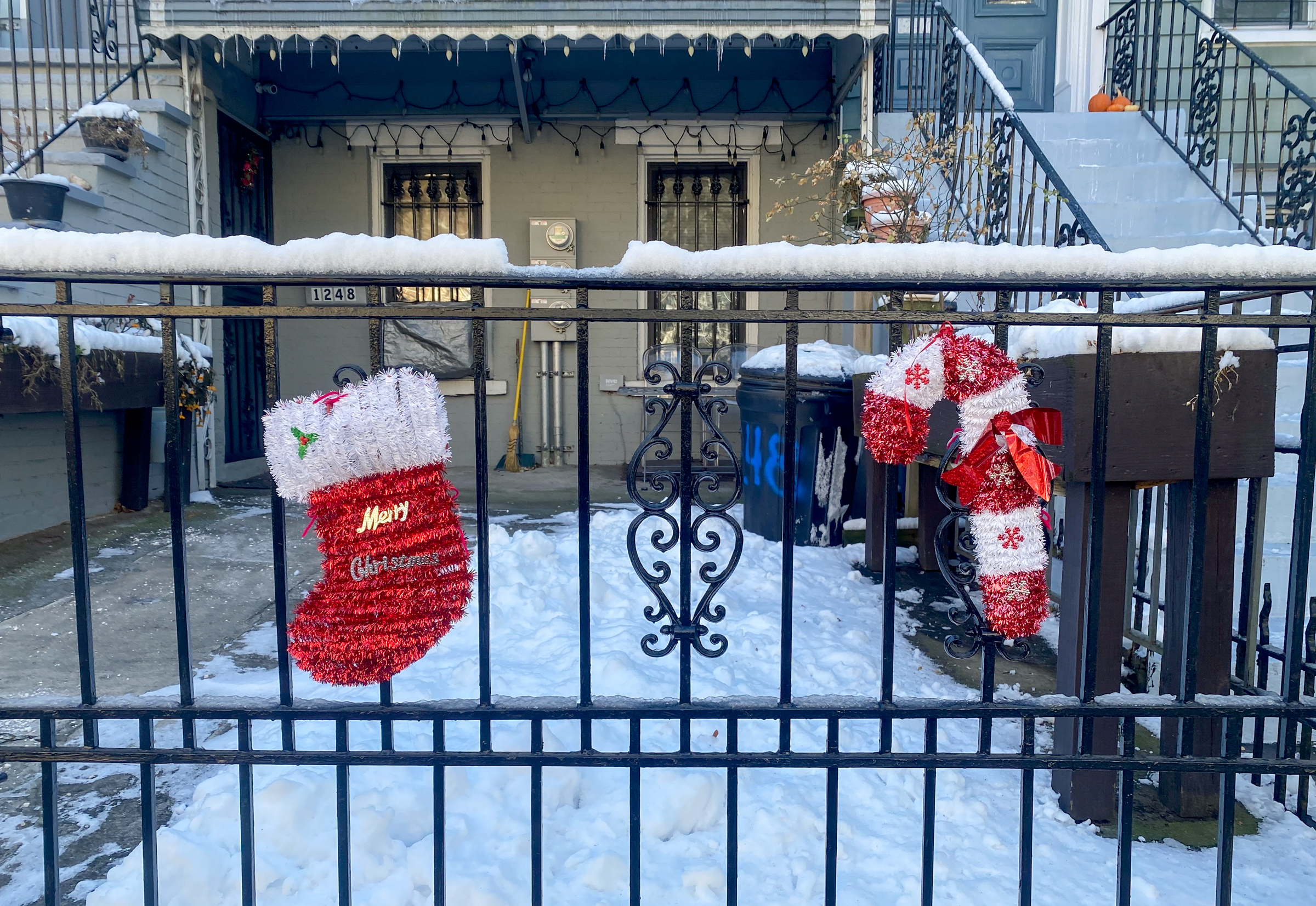Garage Plan for Heights Building Rears Its Head Again
Despite the firestorm of community opposition that greeted a proposal to build a car garage in the courtyard of Brooklyn Heights’ historic Riverside Apartments a couple years ago, the Brooklyn Eagle reports that the building’s owner is still keen on making the parking plan happen. Riverside’s owner, the Pinnacle Group, wants to build a 134-car,…


Despite the firestorm of community opposition that greeted a proposal to build a car garage in the courtyard of Brooklyn Heights’ historic Riverside Apartments a couple years ago, the Brooklyn Eagle reports that the building’s owner is still keen on making the parking plan happen. Riverside’s owner, the Pinnacle Group, wants to build a 134-car, two-level parking garage (one level would be underground) in the building’s courtyard at Joralemon Street and Columbia Place. Pinnacle hired a new architect this time round for the plans, which were presented to Community Board 2’s Land Use and Landmarks Committee last week. The committee voted unanimously against the proposal, which is now headed to the LPC for possible approval. Riverside tenants are opposing the would-be garage for a variety of reasons, including the notion—which Pinnacle denies—that their landlord wants to take the building condo.
Update: A representative for Pinnacle sent us a rendering of the current plan for the garage, above. An image of the old plan and building are on the jump.
Owner of Riverside Apartments Comes Back With New Plan [Brooklyn Eagle]
What’s Going on at Riverside Apartments? [Brooklyn Heights Blog]
Architecture 101: The Riverside Apartments [Brownstoner] GMAP
Photo of Riverside Apartments by d.p.Hetteix; renderings from the Eagle.






12:18:
You and 11:14 should take a class in reading comprehension.
I don’t make any “demands.” I point out that “judicious improvements can keep [Riverside and others]… affordable.”
I do say that having affordable housing in NYC is as important as any parking garage. You and I may disagree on that.
— U. Designer
they aren’t city-owned. they are privately owned. unless U-Designer wants me to come over and demand that you privately create affordable housing, at your expense, then I dont’ see how you can demand it of others
11:41:
Nothing in my post says that the buildings shouldn’t be upgraded.
Read it again.
As for “Dickensian” conditions: I know a former Navy WAC from World War II who lives very happily in on old model tenement. Her apartment is small but bright and cheerful, spotless, and full of childhood memories. (She grew up in an apartment in the same building!)
It all depends on how buildings are maintained. Riverside and others like them were built to last forever. Judicious improvements can keep them attractive and eminently livable — and affordable (in this town, as important as any parking garage).
U-Designer
Boy oh boy, parking and a garden. Who does this landlord think he is? Next he will want to put in air conditioning and cable. Stop this evil monster!
People are so annoying. BH has no parking.. SO what about the people that dont have a garage at their house and bought a co-op in the area they cant have a car as well.. GREAT IDEA the area needs a garage real bad…People are so into them selfs and forget that all areas need some sort of change… This would not hurt the quality of life in BH so RELAX…….
Everything UD says above is true. In the Eagle article, Holt says that half of the original garden was lost when the BQE was built. However, only the southwest corner was shaved off. (Doesn’t the publisher care if Holt gets the facts right?)
LPC will be looking at the design of the proposed parking structure and whether it is appropriate here, behind this historic building, in the Brooklyn Heights Historic District. Whether or not the building may go condo, the price and availability of parking, and other like topics are not relevant to the commission’s decision.
Finally, to clarify a common misconception, trees do little to mitigate noise. Trees do absorb some carbon monoxide and the leaves do knock some particulate out of the air, but that’s about it. Some studies have also found that what you cannot see doesn’t sound as loud as what you can, but that is an improvement happening between, not in, the ears.
I disagree with 11:29.
those courtyards were grim and mostly utilitarian, intended for drying laundry and hosing down horses. Don’t over-romanticize these buildings. They were model tenements, emphasis on the tenement. They were meant to be hygenic but were not designed in an overly generous manner. There is absolutely nothing wrong with upgrading these buildings to a slightly higher level of amenity for the 21st century. It is astonishing that there are still those who like to think that the less wealthy should be perfetly happy in a state of the art Dickensian tenement from the 1880’s. It would be funny it it were not a little offensive.
I disagree with 11:29.
those courtyards were grim and mostly utilitarian, intended for drying laundry and hosing down horses. Don’t over-romanticize these buildings. They were model tenements, emphasis on the tenement. They were meant to be hygenic but were not designed in an overly generous manner. There is absolutely nothing wrong with upgrading these buildings to a slightly higher level of amenity for the 21st century. It is astonishing that there are still those who like to think that the less wealthy should be perfetly happy in a state of the art Dickensian tenement from the 1880’s. It would be funny it it were not a little offensive.
The “Riverside” complex is a very important example of New York “model” tenements, built by A.T. White. (Another of his projects is the “Home and Tower Buildings” in Cobble Hill and is now a co-op, I believe).
Originally, there was another line of buildings defining Riverside’s courtyard. These were demolished for the BQE.
The courtyard is an essential part of the scheme. Indeed, such courtyards were what distinguished blocks like this from 19th-century slum tenements elsewhere in the city. And their open space also established principles of 20th-century city planning. There’s a straight line from Riverside to Stuyvesant Town and, like them or not, the hundreds of urban renewal projects that changed the face of New York by the 1960s.
(I’ve always found it interesting that the BQE circles Brooklyn Heights, where affluent neighbors enjoy the Esplanade, but slashes through working-class blocks like this, no doubt because of the Heights’ power to resist Robert Moses.)
As an artifact, the courtyard deserves to be saved. It’s proto-modern urban planning. Freshen it up, don’t destroy it.
— U. Designer